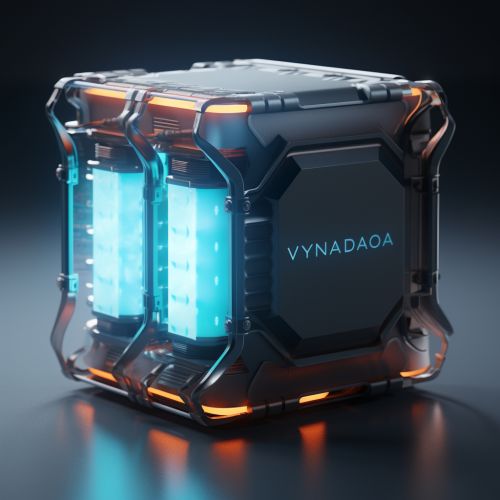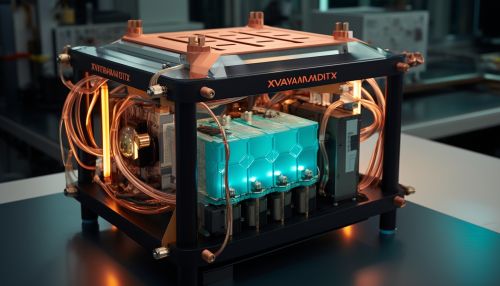Vanadium redox battery
Introduction
The Vanadium redox battery (VRB), also known as the Vanadium redox flow battery (VRFB), is a type of rechargeable flow battery that employs vanadium ions in different oxidation states to store chemical potential energy. The vanadium redox battery exploits the ability of vanadium to exist in solution in four different oxidation states, and uses this property to make a battery that has just one electroactive element instead of two.


History
The concept of the vanadium redox battery involves the use of vanadium in a solution of sulfuric acid, with different oxidation states. This concept was initially proposed by NASA scientists in the early 1970s. The first successful demonstration of the all-vanadium redox flow battery which employed vanadium in a solution of sulfuric acid in each half was by Maria Skyllas-Kazacos and her team at the University of New South Wales in the 1980s.
Principle of Operation
The operation of a vanadium redox battery involves the reduction and oxidation of ionic species of vanadium. This is achieved by passing a solution of vanadium ions across a proton exchange membrane. The energy storage and release is achieved by the shifting of electrons from one vanadium ion to another, a process known as a redox reaction.
Design and Components
A typical vanadium redox battery consists of an assembly of power cells in which the two electrolytes are separated by a proton exchange membrane. Both electrolytes are vanadium-based, the anolyte is a solution of V(II) and V(III), and the catholyte is a solution of V(IV) and V(V). The electrolytes may be prepared from any vanadium source, but are typically made from vanadium pentoxide (V2O5).
Applications
Vanadium redox batteries are used in a variety of applications, including grid energy storage, where they have a number of advantages over other battery types such as high efficiency, long life, and the ability to be discharged and recharged repeatedly without loss of performance. They are also used in power systems for remote or off-grid systems, and in systems that require a high level of reliability, such as uninterruptible power supplies.
Advantages and Disadvantages
Vanadium redox batteries have a number of advantages over other types of batteries. These include a very high energy density, a broad operating temperature range, and a long operational life. They also have a number of disadvantages, including a relatively high cost, a complex system design, and the need for careful management of the electrolyte.
Future Developments
There are a number of areas in which the technology of the vanadium redox battery could be improved. These include the development of more efficient membranes, the development of electrolytes with higher energy densities, and improvements in the system design to reduce complexity and cost.
